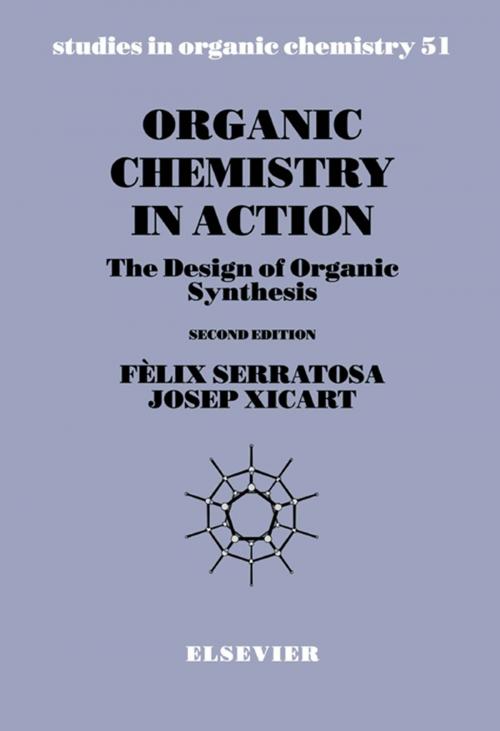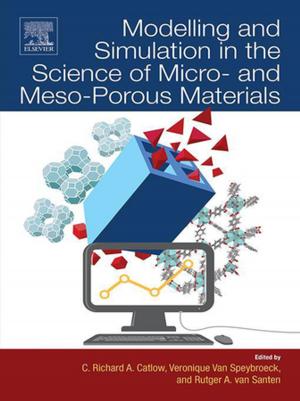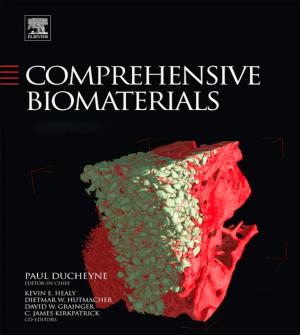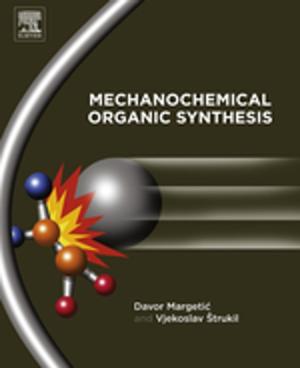Organic Chemistry in Action
The Design of Organic Synthesis
Nonfiction, Science & Nature, Science, Chemistry, Organic| Author: | F. Serratosa, J. Xicart | ISBN: | 9780080538143 |
| Publisher: | Elsevier Science | Publication: | May 9, 1996 |
| Imprint: | Elsevier Science | Language: | English |
| Author: | F. Serratosa, J. Xicart |
| ISBN: | 9780080538143 |
| Publisher: | Elsevier Science |
| Publication: | May 9, 1996 |
| Imprint: | Elsevier Science |
| Language: | English |
The first edition of this book was welcomed with great enthusiasm by teachers and students. Some of the changes to this second, revised, updated and extended edition include:
1) The book has been restructured into two well-differentiated sections: Part A, dealing with conventional organic synthesis, and Part B, devoted exclusively to computer-assisted organic synthesis and based on the former Chapter 11 and Appendices 2, 3 and 4 of the first edition. 2) In Chapter 1, emphasis is placed on new objectives and targets, as well as on the role that organic synthesis should play in the future in new areas of supramolecular chemistry and bioorganic chemistry. 3) A more extended discussion on synthetic methods and strategies based on radical carbon-carbon bond-forming reactions has been included (Chapter 7). 4) Some new examples to illustrate the heuristic principles have been incorporated (Chapter 4). 5) The chapter on alicyclic stereoselection has been split into two chapters (9 and 10). Chapter 10, which is exclusively devoted to Sharpless's asymmetric epoxidation and dihyroxylation, has been written de novo. The most recent advances in catalytic stereoselective aldol are incorporated in Chapter 9. 6) In Chapter 11, which is new, the aim is to firstly, present a panoramic view of the most important methods for preparation of optically pure compounds in industrial scale (chirotechnology) and secondly, to give a brief insight into the new biological synthetic methodologies, such as the use of enzymes and catalytic monoclonal antibodies or abzymes, which are becoming more and more important and familiar to the synthetic organic chemist. 7) The chapter dealing with examples of retrosynthetic analysis and the corresponding total synthesis has been enlarged and includes new syntheses of natural products (Chapter 13).
The first edition of this book was welcomed with great enthusiasm by teachers and students. Some of the changes to this second, revised, updated and extended edition include:
1) The book has been restructured into two well-differentiated sections: Part A, dealing with conventional organic synthesis, and Part B, devoted exclusively to computer-assisted organic synthesis and based on the former Chapter 11 and Appendices 2, 3 and 4 of the first edition. 2) In Chapter 1, emphasis is placed on new objectives and targets, as well as on the role that organic synthesis should play in the future in new areas of supramolecular chemistry and bioorganic chemistry. 3) A more extended discussion on synthetic methods and strategies based on radical carbon-carbon bond-forming reactions has been included (Chapter 7). 4) Some new examples to illustrate the heuristic principles have been incorporated (Chapter 4). 5) The chapter on alicyclic stereoselection has been split into two chapters (9 and 10). Chapter 10, which is exclusively devoted to Sharpless's asymmetric epoxidation and dihyroxylation, has been written de novo. The most recent advances in catalytic stereoselective aldol are incorporated in Chapter 9. 6) In Chapter 11, which is new, the aim is to firstly, present a panoramic view of the most important methods for preparation of optically pure compounds in industrial scale (chirotechnology) and secondly, to give a brief insight into the new biological synthetic methodologies, such as the use of enzymes and catalytic monoclonal antibodies or abzymes, which are becoming more and more important and familiar to the synthetic organic chemist. 7) The chapter dealing with examples of retrosynthetic analysis and the corresponding total synthesis has been enlarged and includes new syntheses of natural products (Chapter 13).















